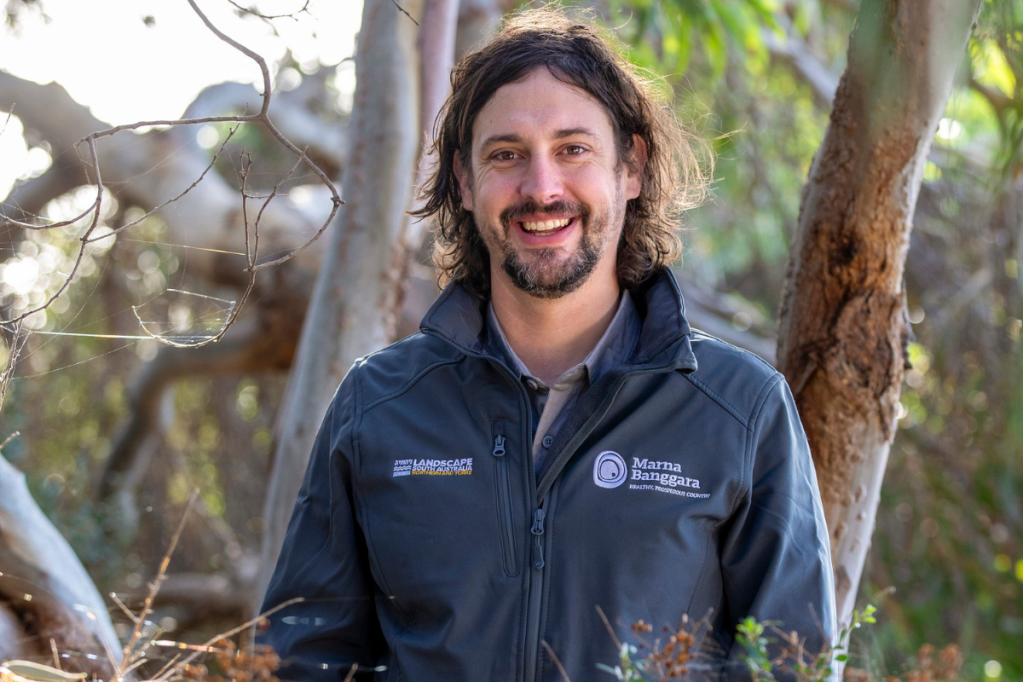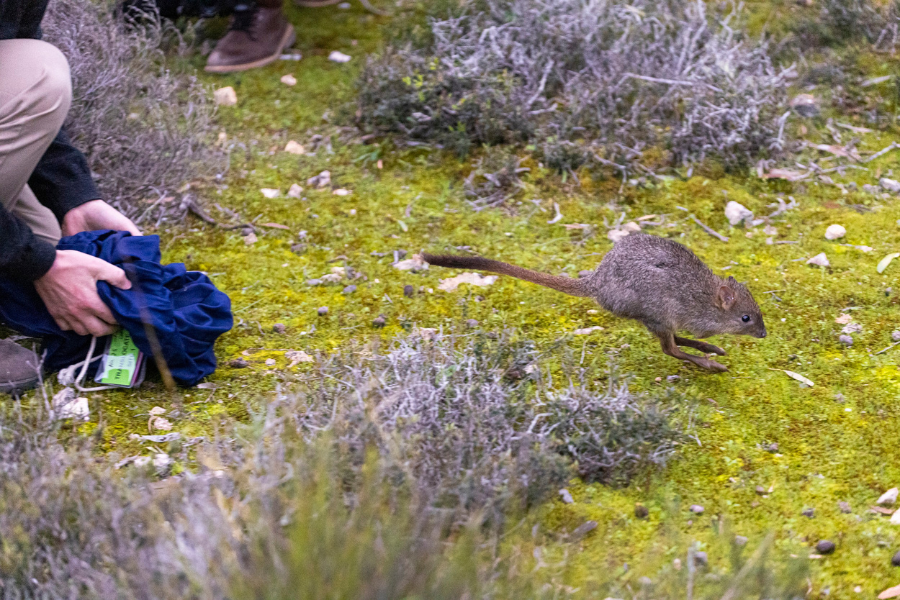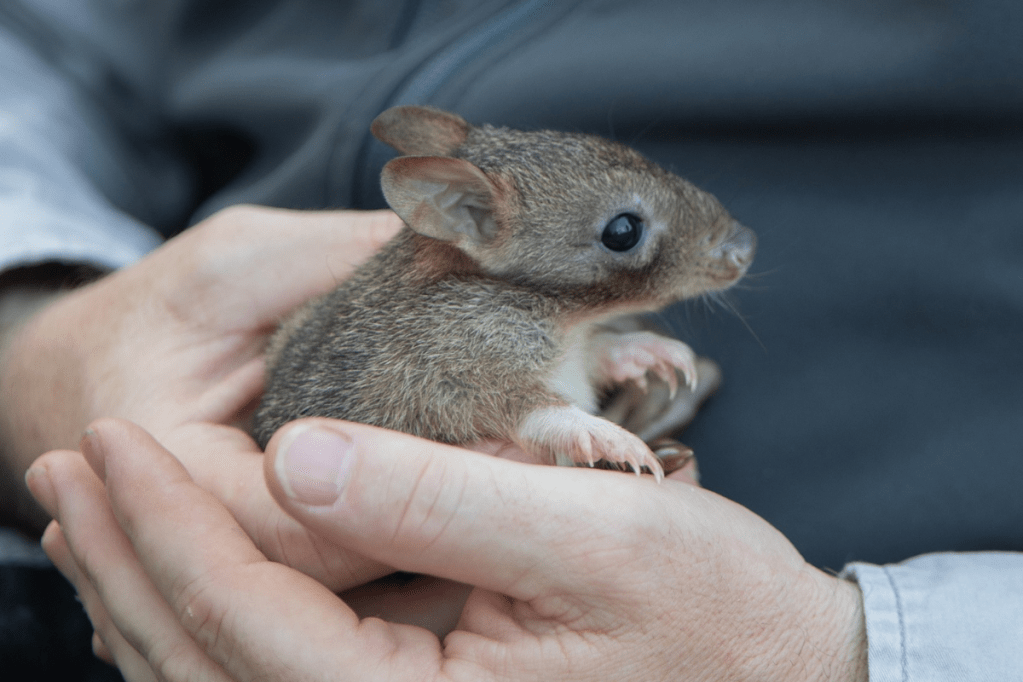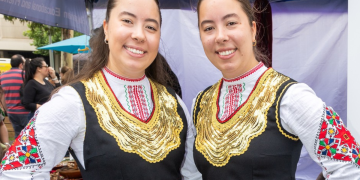This cute marsupial hadn’t been seen on the Yorke Peninsula for more than a century. Its re-emergence story shows how community, science and predator control can rebuild ecosystems – and hope
Picture a creature the size of a guinea pig, with big eyes, tiny paws, and a prehensile tail it uses to carry grass like a handbag.
You’re imagining a brush-tailed bettong – or yalgi in Narungga language. And they’re back on Yorke Peninsula thanks to Marna Banggara, a rewilding project jointly funded by the Commonwealth and South Australian governments, and delivered with the support of local landholders, Narungga people and conservation partners.
“Bettongs are ecosystem engineers,” says Max Barr, a conservation ecologist with the Northern and Yorke Landscape Board.
Max, who helped lead the project to bring bettongs back to Yorkes, says they’re not just cute, but incredibly useful: “These guys dig around in the soil, turning over between two and six tonnes a year – that helps water soak in, spreads seeds, and basically composts the bush.”
Bettongs hadn’t been seen here for more than a century, and their comeback has caught the attention of conservationists nationwide.
So much so that when Max heads to the Gold Coast in late September to address Landcare Australia’s National Landcare Conference, he’ll be representing something uniquely South Australian: the nation’s first rewilding project to use strategic predator control in a working landscape.

From wandering to wonder
Max grew up hiking and camping in the Adelaide Hills – “the kind of kid who always wanted to be a ranger.” But like many young people, the path wasn’t straight.
After high school, he went travelling, worked odd jobs overseas, then came back as a mature-age student to study marine biology at Adelaide Uni. That led to GIS mapping, which led to volunteering on biological surveys across SA.
“I always advocate for volunteer experiences,” Max says. “It gives you experience, but it also helps you figure out your likes and dislikes. You either learn you want to do something, or you might not like it as much as you thought.”
One of those volunteer gigs took him to the Yorke Peninsula. When a conservation job came up there in 2014, the people he’d met encouraged him to apply. “It’s one of those things where saying yes changes your whole life,” he says.
Eleven years later, he’s the Partnerships Coordinator for Marna Banggara – the rewilding project responsible for bringing back the bettongs to Yorkes – plus so much more.
The Australia-first experiment
Marna Banggara (meaning “healthy, prosperous country” in Narungga language) is attempting something ambitious: bringing back locally extinct species not in a protected sanctuary, but across 140,000 hectares of national parks, farmland, towns, and even holiday rentals on southern Yorke Peninsula.
“There are lots of reintroduction projects around Australia,” Max says. “But most happen behind total barriers. We’re using a different approach – strategic predator control in a landscape where conservation, farming and community coexist.”

The comeback kids
The project’s poster child is the brush-tailed bettong.
In 2021, the first 40 brush-tailed bettongs were released into Dhilba Guuranda–Innes National Park from Wedge Island, SA. In total, 193 have been translocated from Western Australia and Wedge Island.
The results have exceeded expectations. During the latest monitoring, 66 per cent of captured bettongs were born locally – proof the population is thriving. Nearly all females were carrying pouch young.
“People are noticing them. You can see their diggings – they almost look like a miniature crater in the ground,” says Max. “You might not see the animal, but you’re seeing that they’ve been there, and they’re doing their job.”
But it’s not just about cute marsupials. The project is rebuilding an entire ecosystem.
Hooded plovers – tiny beach birds that lay their eggs in sand scrapes – have more than doubled their chick survival rate. Malleefowl mounds that are checked regularly show consistent breeding activity, and recent surveys have identified hundreds of potential mounds that are yet to be recorded. Native barn owls are rebounding. And bush stone-curlews, with their eerie night calls, are quietly returning after decades of absence.
Marna Banggara works on a pretty powerful principle: control predators, bring back native species, and the ecosystem begins to restore itself – reducing the need for human intervention.

The secret sauce: people, partnerships, and predator control
Max’s upcoming conference presentation is titled People, Partnerships and Predator Control: Rebuilding Biodiversity in a Working Landscape – and those three pillars explain why this project is working.
People: The project emerged from ten years of community action planning and getting everyone involved – farmers, traditional owners, tourism operators, conservation groups, government agencies.
“You’ve got everybody sitting at the table,” Max says. “Trees for Life, Native Orchid Society of SA, bird groups, farmers, local landcare groups, tourism operators. It’s basically open to anyone who wants to be involved.”
Partnerships: The name Marna Banggara comes from the language of Yorke Peninsula’s traditional custodians, the Narungga people, who bring traditional knowledge to the project. Collaboration is key – the project is led by the Northern and Yorke Landscape Board with support from the Commonwealth and South Australian governments, WWF-Australia, Zoos SA, Foundation for National Parks & Wildlife, and more than a dozen other local and national partners. Even Western Australia’s government helped with animal transfers.
Predator control: Since 2014, landholders across 140,000 hectares have helped bait foxes. A 25-kilometre fence now stretches across the Peninsula’s base – not a complete enclosure, but a strategic barrier that slows predator movement and helps focus control efforts.
Why this matters beyond Yorke Peninsula
The project’s success is catching attention because it proves conservation and agriculture can work together.
“Some of the farmers down there were involved in clearing the land originally,” Max says. “Now their kids or grandkids are taking notice of how the landscape has changed, and they want to be custodians of that land.”
The benefits flow both ways. Reduced fox numbers mean better lamb survival rates for sheep farmers. Native barn owls control mice better than cats ever could – a single pair can eat over 3000 mice a year without harming native wildlife.
“It’s not an us-and-them situation,” Max says. “We want joint outcomes for that whole landscape.”

What you can do
Whether you live on Yorke Peninsula or just love camping at Marion Bay, you can help:
- Keep cats contained, especially at night. Even pet cats with bells can kill native animals.
- Use the FeralScan app to report pest animal sightings – it’s free and helps track predator activity
- Volunteer for camera trap analysis – reviewing footage from remote cameras to log predator numbers
- Join hooded plover surveys – beach counts happen every two years, plus nest monitoring during breeding season
- Install a barn owl box if you live locally
Find out how to get involved in all these projects plus other hands-on conservation work here.
The 20-year vision
Over the next two decades, Marna Banggara aims to reintroduce southern brown bandicoots, red-tailed phascogales, western quolls, and native rodents – each playing a role in rebuilding the ecosystem.
“If I could fast forward 20 years, I’d love to see about half a dozen species reintroduced and thriving,” Max says. “I’d love to see the data from this project contributing to others around Australia. And if people can come here and see these animals, see these critters kicking around in their natural environment at night – that would be a huge win.”
For now, Max is focused on sharing the lessons from Yorke Peninsula with a national audience. Because if this approach can work in one corner of SA, it might just work everywhere.
To find out more about Marna Banggara or volunteer opportunities, click here.

















